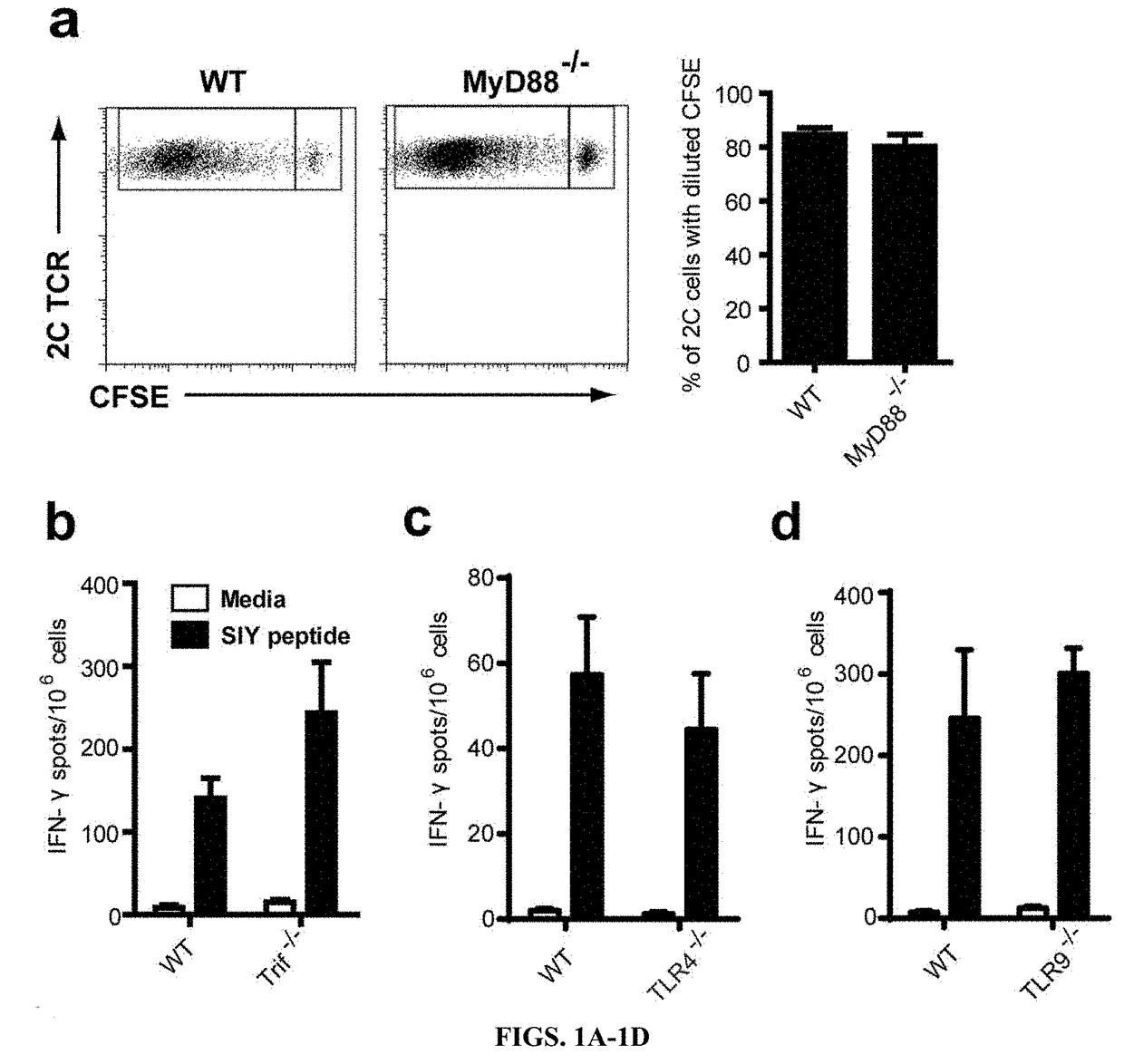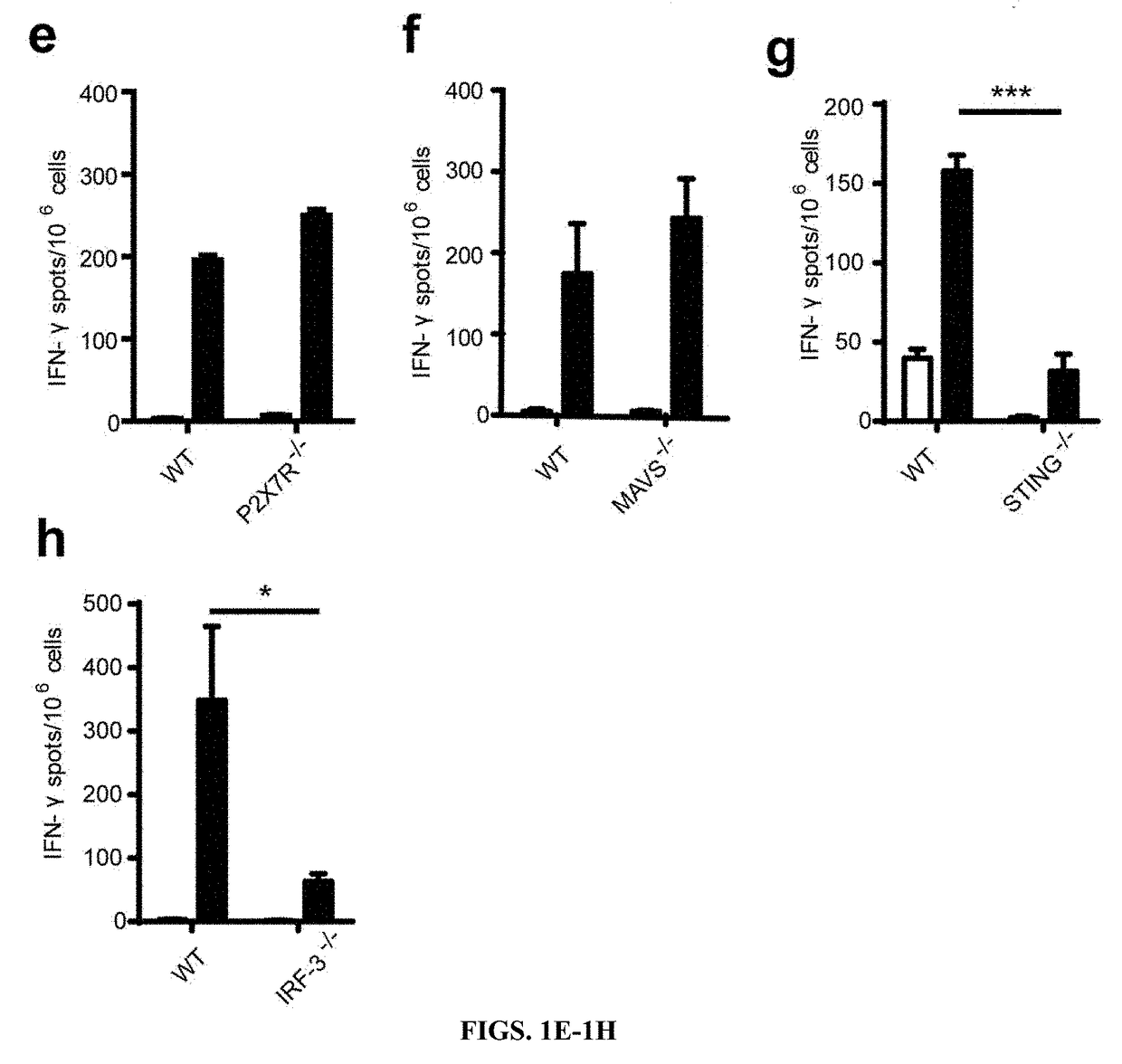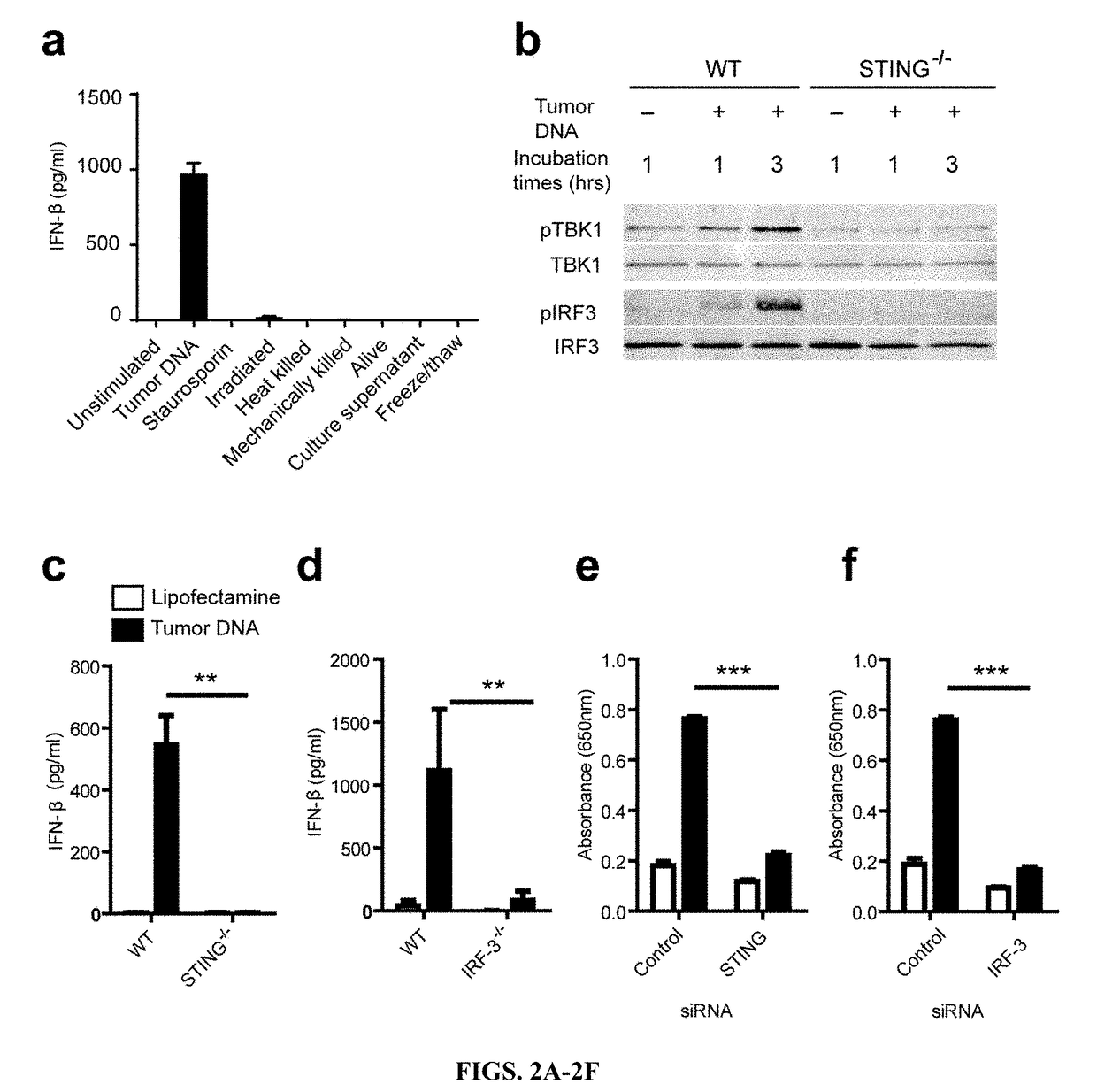Use of sting agonist as cancer treatment
- Summary
- Abstract
- Description
- Claims
- Application Information
AI Technical Summary
Problems solved by technology
Method used
Image
Examples
example 1
Materials and Methods
[0171]Mice and cells. C57BL / 6, 129, MyD88− / −, Trif− / −, P2X7R− / −, IPS-1− / −, TLR4− / −, TLR9− / −, Tmem173− / −(STING-deficient), Irf3− / −, and 2C TCR Tg mice were used. The C57BL6-derived melanoma cell line B16.F10.SIY (henceforth referred to as B16.SIY) was used (Fuertes, et al. 2011). All cells were cultured in complete DMEM media supplemented 10% heat-inactivated FCS. For measurement of type I interferon reporter activity, B16-Blue™ IFN-α / β reporter cells were purchased from InvivoGen and maintained according to the manufacturer's instructions.
[0172]2C CD8+ T cell purification, CFSE staining and adoptive transfer. 2C TCR Tg CD8+ T cells were isolated from spleens and lymph nodes of 2C / RAG2− / − mice by using magnetic beads. T cells were loaded with 2.5 mM CFSE and transferred into WT or designated gene-targeted mice (4×106 cells / mouse). After 1 day, recipient mice received 106 B16.SIY cells, and 5 days later splenocytes from recipient mice were analyzed after staining ...
example 2
STING and IRF3 are Required for Spontaneous T Cell Activation Against Tumors In Vivo.
[0185]The inventors pursued a working model in which innate immune sensing pathways might detect tumor-derived factors, induce type I IFN production, and lead to cross-priming of tumor antigen-specific CD8+ T cells in the host (Fuertes, et al., 2011; Diamond, et al., 2011). To begin to address host requirements for a natural anti-tumor T cell response, gene-targeted mice deficient in specific pathways were utilized. To determine whether host Toll-like Receptor (TLR) pathways were required for spontaneous CD8+ T cell priming, the inventors utilized MyD88− / − or TRIF− / − mice. Because MyD88 can function in a T cell-intrinsic fashion (Zhou, et al., 2009), the inventors performed adoptive transfer of wildtype CFSE-labeled 2C TCR Tg T cells (that are specific for the model antigen SIY) into WT or MyD88− / − mice and challenged with B16.SIY tumors (Zhou, et al., 2005). No defect in T cell proliferation or ac...
example 3
Tumor-derived DNA Induces IGN-B Production by STING and IRF-3 Dependent Pathways
[0187]The inventors turned to an in vitro system to screen fractions of B16 tumor cell extracts and tumor cells killed using a variety of approaches, to determine which preparation might be capable of inducing IFN-β from DCs. Tumor cells killed in multiple ways, including by mechanical disruption, or supernatants from spent B16 cultures failed to induce IFN-β production by bone marrow-derived DCs (FIG. 2a). Based on recent reports characterizing a cytosolic DNA sensing pathway that can detect intracellular viruses, bacteria, and Plasmodium falciparum and drive type I IFN production (Unterholzner, et al., 2010; Takaoka, et al., 2007; Sharma, et al., 2011; Henry, et al., 2007), the inventors examined whether tumor-derived DNA might act similarly. Indeed, B16 melanoma-derived total DNA combined with Lipofectamine provoked IFN-β production by DCs (FIG. 2a). The inclusion of Lipofectamine was necessary, sugge...
PUM
| Property | Measurement | Unit |
|---|---|---|
| volumes | aaaaa | aaaaa |
| volume | aaaaa | aaaaa |
| volumes | aaaaa | aaaaa |
Abstract
Description
Claims
Application Information
 Login to View More
Login to View More - R&D
- Intellectual Property
- Life Sciences
- Materials
- Tech Scout
- Unparalleled Data Quality
- Higher Quality Content
- 60% Fewer Hallucinations
Browse by: Latest US Patents, China's latest patents, Technical Efficacy Thesaurus, Application Domain, Technology Topic, Popular Technical Reports.
© 2025 PatSnap. All rights reserved.Legal|Privacy policy|Modern Slavery Act Transparency Statement|Sitemap|About US| Contact US: help@patsnap.com



